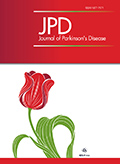Authors: Hashimoto, Makoto | Ho, Gilbert | Takamatsu, Yoshiki | Wada, Ryoko | Sugama, Shuei | Takenouchi, Takato | Waragai, Masaaki | Masliah, Eliezer
Article Type:
Research Article
Abstract:
Aging-related neurodegenerative disorders are frequently associated with the aggregation of multiple amyloidogenic proteins (APs), although the reason why such detrimental phenomena have emerged in the post-reproductive human brain across evolution is unclear. Speculatively, APs might provide physiological benefits for the human brain during developmental/reproductive stages. Of relevance, it is noteworthy that cross-seeding (CS) of APs has recently been characterized in cellular and animal models of neurodegenerative disease, and that normal physiological CS of multiple APs has also been observed in lower organisms, including yeast and bacteria. In this context, our main objective is to discuss a possible involvement of the
…CS of APs in promoting evolvability, a hypothetical view regarding the function of APs as an inheritance of acquired characteristics against human brain stressors, which are transgenerationally transmitted to offspring via germ cells. Mechanistically, the protofibrils formed by the CS of multiple APs might confer hormesis more potently than individual APs. By virtue of greater encoded stress information in parental brains being available, the brains of offspring can cope more efficiently with forth-coming stressors. On the other hand, subsequent neurodegeneration caused by APs in parental brain through the antagonistic pleiotropy mechanism in aging, may suggest that synergistically, multiple APs might be more detrimental compared to singular AP in neurodegeneration. Taken together, we suggest that the CS of multiple APs might be involved in both evolvability and neurodegenerative disease in human brain, which may be mechanistically and therapeutically important.
Show more
Keywords: Alzheimer’s disease, Parkinson’s disease, amyloidogenic proteins, amyloid cascade hypothesis, evolvability hypothesis, cross-seeding, antimicrobial protection model
DOI: 10.3233/JPD-191675
Citation: Journal of Parkinson's Disease,
vol. 9, no. 4, pp. 793-802, 2019






